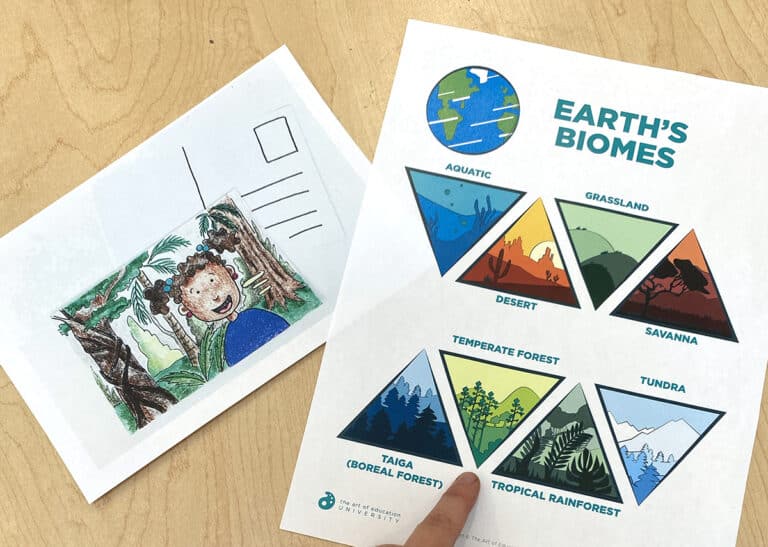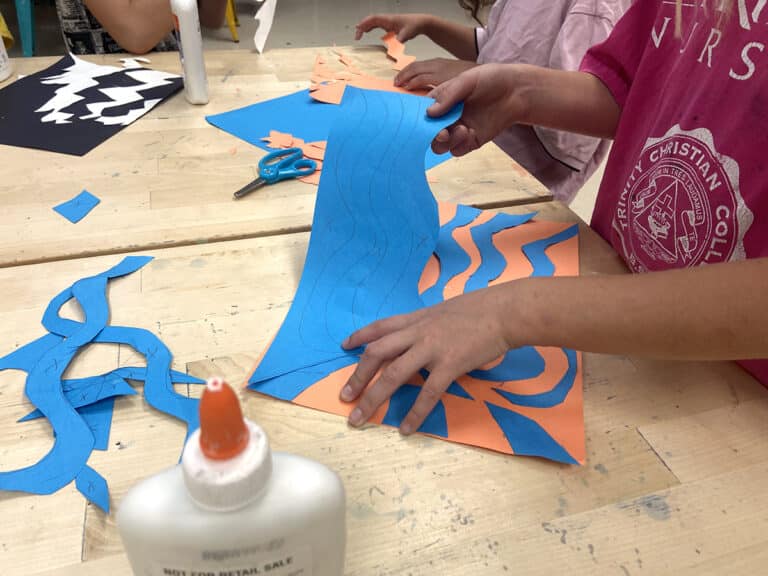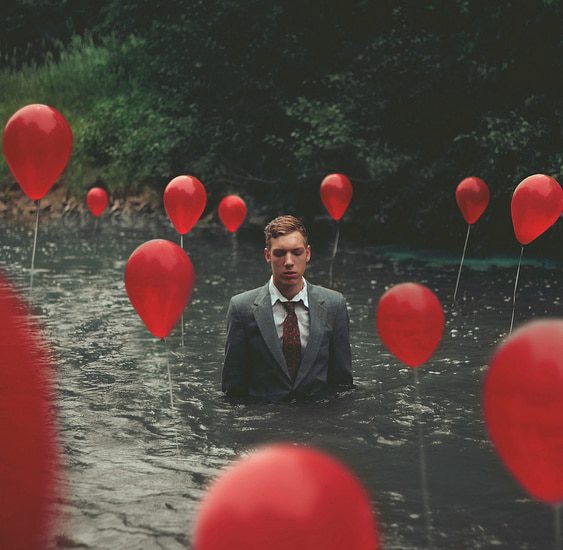We often explore traditional elements and principles in our classes, however, there are many new postmodern and contemporary themes that are overlooked. Over the next several weeks, this series will delve into these contemporary art principles and provide ideas for students to examine these new ideas.
This Week’s Theme: Time as an Element
When we consider time in traditional art, we are more likely to think of the concept of timelessness rather than incorporating time into the work. Most works of traditional art capture a moment of time and hold it frozen for as long as the piece survives.
There are some modern artists that pushed past the notion of time as static and explored the effect time had on their work. Monet’s paintings, such as the series of the Notre Dame Cathedral in Rouen, captured the light at different times of the day. Another example might be Nude Descending a Staircase, No. 2 where Duchamp depicts motion with successive superimposed images.
Today’s postmodern and contemporary artists take the concept further by incorporating time into their work as if it were an element of art. Without the element of time, their work would be meaningless at best, nonexistent at worst. Here are some examples.
Melting Men: Néle Azevedo
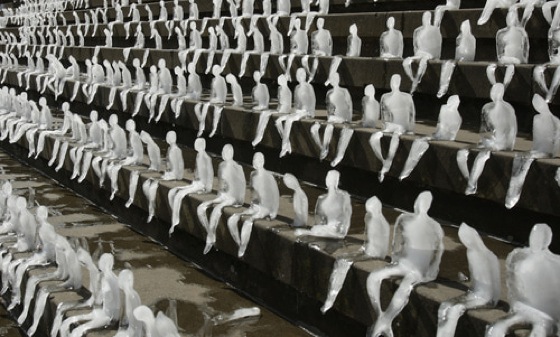
Brazilian artist Néle Azevedo carved thousands of figures out of ice. She placed them on city steps and left them in the sun to melt. Although the work was originally created for a different purpose, Azevedo embraced the fact that people also saw it as a comment on the issue of global warming and the melting of the polar ice caps over the coming years. Without the use of time, and a little help from the sun, the piece would not have been so powerful.
Inflatable Street Art: Joshua Allen Harris
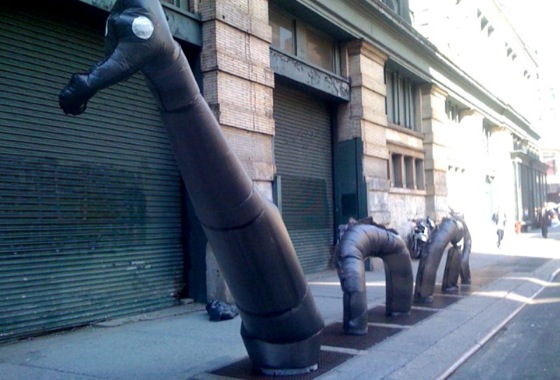
Joshua Allen Harris creates creatures out of plastic bags and tapes them to the grates where subway air is vented. When a subway car passes underneath, the rush of air raises the creatures to life. The length of the subway car determines how much air the artwork receives and, subsequently, determines the amount of time the art will be inflated. In this manner, time plays a key element in his work.
The Dialogue: Mineko Grimmer

Mineko Grimmer uses time, gravity and sound in her installation piece, The Dialogue. Suspended over a framework of bamboo poles and guitar strings hangs a pyramid block of ice. Frozen in the ice are hundreds of pebbles. As the ice melts, the pebbles are released. As they fall through the bamboo and guitar strings, they produce sounds of a musical quality. Through the use of time, Grimmer has developed an instrument with the ability to play itself.
Working With Students
When working with students, it is important to emphasize that their projects should incorporate time. This concept can be difficult to grasp and the students’ first ideas may be representational. For example, drawing a clock or drawing a young person and then an old person. It will be helpful to first have students explore what happens over time. Have them create a list of things that happen over time. i.e. things grow, thing deteriorate, things move from point A to point B.
Student example: Time Heals All Things
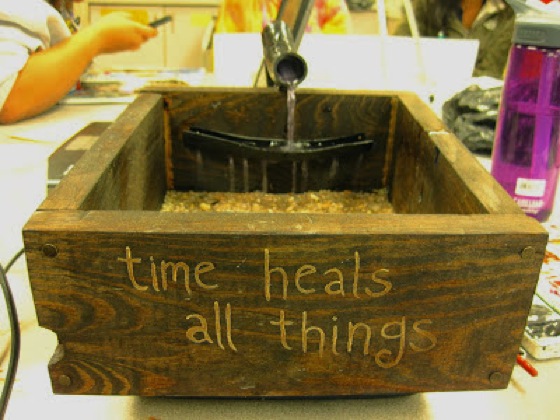
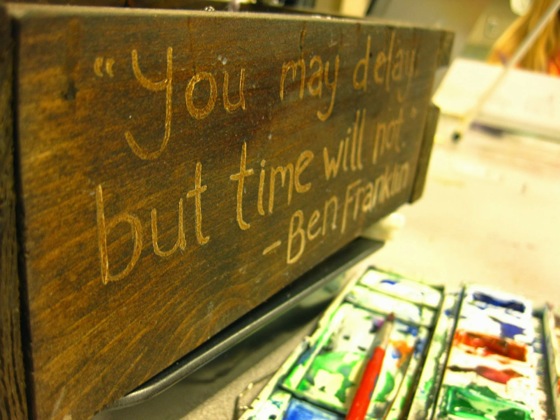
For her final project, this student create a box filled with sand. At one end of the box, water constantly dripped onto the sand. Next to the box was placed a set of water colors and a paint brush. Other students were encouraged to interact with the art by using the water colors to write or draw in the sand. At first, the water color left a mark in the sand. However, the mark was slowly erased by the running water. Whatever was written soon vanished.
The student who designed this project explained her thinking. “Time can erase memories in a negative sense, but the passage of time is also very healing. As time goes on, our anger, pain, and loss are soothed, glossed over, and forgotten.”
So tell us, do you think time can be used as an element of art?
Have you ever challenged your students to use time as an element? How did it go?
{image source}{image source}{image source}
Magazine articles and podcasts are opinions of professional education contributors and do not necessarily represent the position of the Art of Education University (AOEU) or its academic offerings. Contributors use terms in the way they are most often talked about in the scope of their educational experiences.

